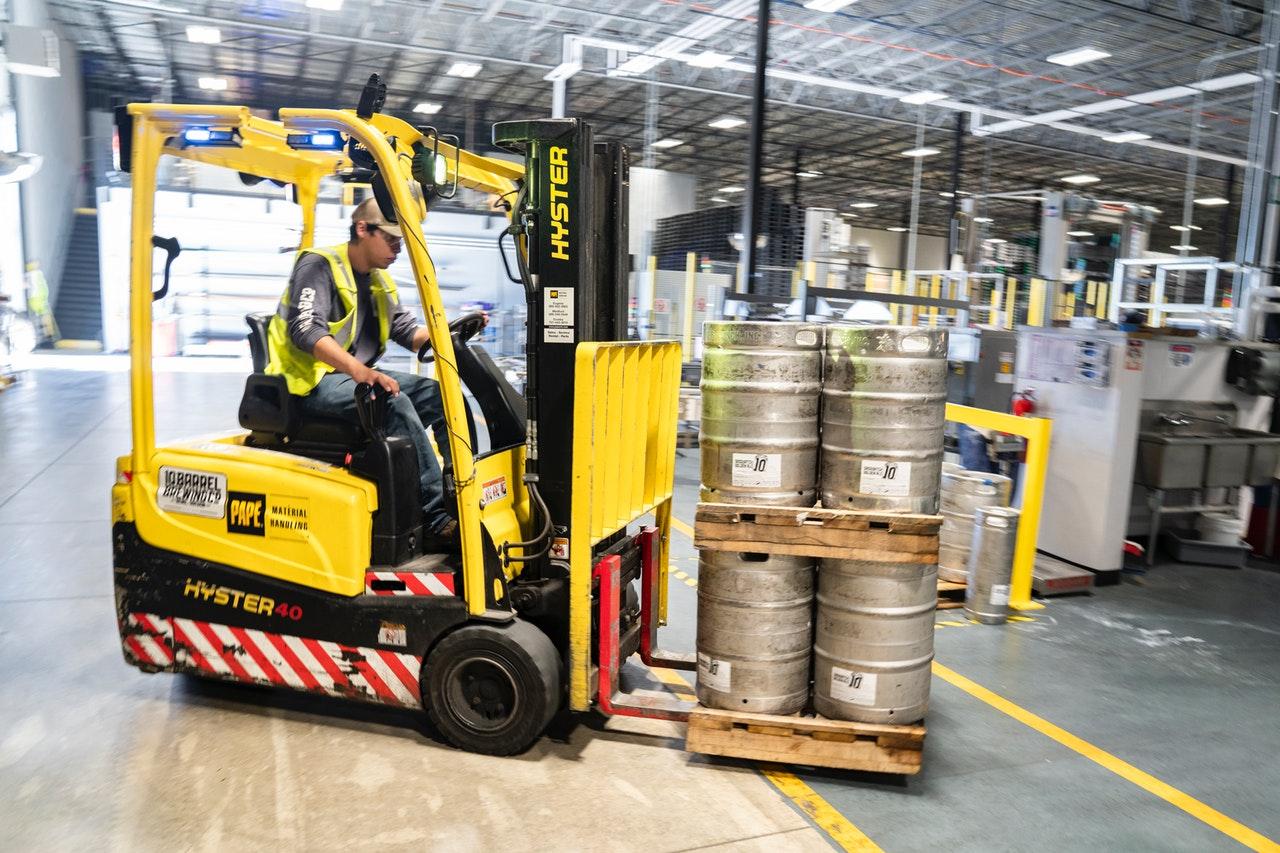Forklifts are a useful industrial vehicle and are one of the most common vehicles found on job sites. They are also the cause of serious accidents each year in Ontario. Here are five essential rules for forklift safety to help minimize workplace hazards.

1. Get Proper Training
In Ontario, you don’t need a license to operate a forklift. You do, however, need proper training to become certified and follow guidelines put forward by the Ontario Occupational Health and Safety Act. Training covers how to operate forklifts in a work environment safely and ensures all operators know to look for and avoid common forklift hazards.
Training is available from many places across Ontario, including TRH Group. It can also recertify current forklift operators, who need to renew their training every three years.
2. Know Your Class of Forklift
There are many different types of forklift and lift truck in use in Ontario today. It is essential to know the difference between them and how to operate them. Each class of forklift or lift truck will require different weights and counterbalances and will manoeuvre in slightly different ways.
To stay safe, you should be certified and trained in each type of forklift that you will be operating. These types include:
- Industrial Reach forklift trucks
- Counterbalance forklifts
- Rough terrain forklifts
- Sideloader forklifts
- Telescopic Handler Forklifts
- Pedestrian pallet trucks
3. Understand the Most Common Forklift Hazards
42% of all severe forklift accidents are due to tipping. Tipping is often caused by driving too fast, maneuvering on ramps or uneven ground or from unbalanced loads. Other common forklift hazards include:
- Falling unsecured loads that crush workers or pedestrians
- Worker injury from standing on forklift forks
- Driver unable to see because of high loads – if you cannot see facing forward because of a load, you should operate the forklift in reverse.
- Uneven ground causing forklift imbalance
- Unbalanced or overweight loads, leading to tipping.
- Under-Ride – This is when a cross beam intrudes into the operator cabin on standing forklifts (Lakeport Metal Craft has created The Backbone — a Stand Up Reach Truck Rear Guard that prevents under-ride.)
4. Make Sure Your Environment Is Safe
Workers who are not operating a forklift can still be injured by one. Keep everyone safe by maintaining a safe work environment with clear pathways and marked hazards. These include:
- Clearly marked travel areas for pedestrians and forklifts
- Use clear signs at all intersections and pedestrian crossways.
- Post speed limits.
- Mark any unsafe areas.
5. Watch Out For Hazards
Things to look out for include:
- Inspect tires to make sure they are correctly inflated with no signs of punctures or worn treads
- Check oil levels and look for any fluid leaks
- Test that the brakes, lights, horn and signal lights are working correctly.
- Inspect the forks to make sure they are straight and properly functioning
Follow these important forklift safety rules and precautions to keep your workplace safe. In addition, for those production businesses that operate CNC machines, it is also imperative to maintain employee safety. Keep your equipment in good working condition through CNC Preventive Maintenance.
Leave a Reply